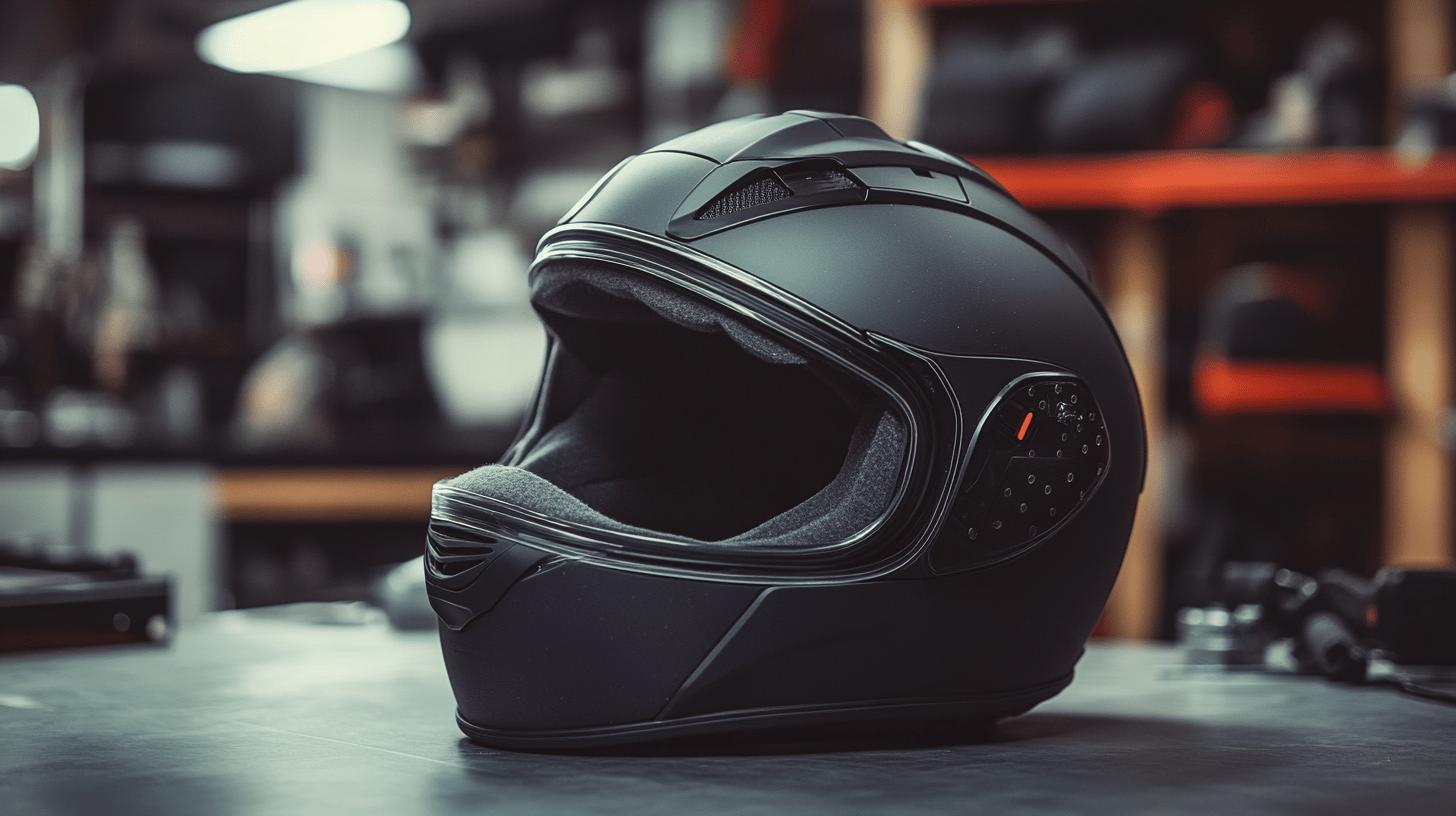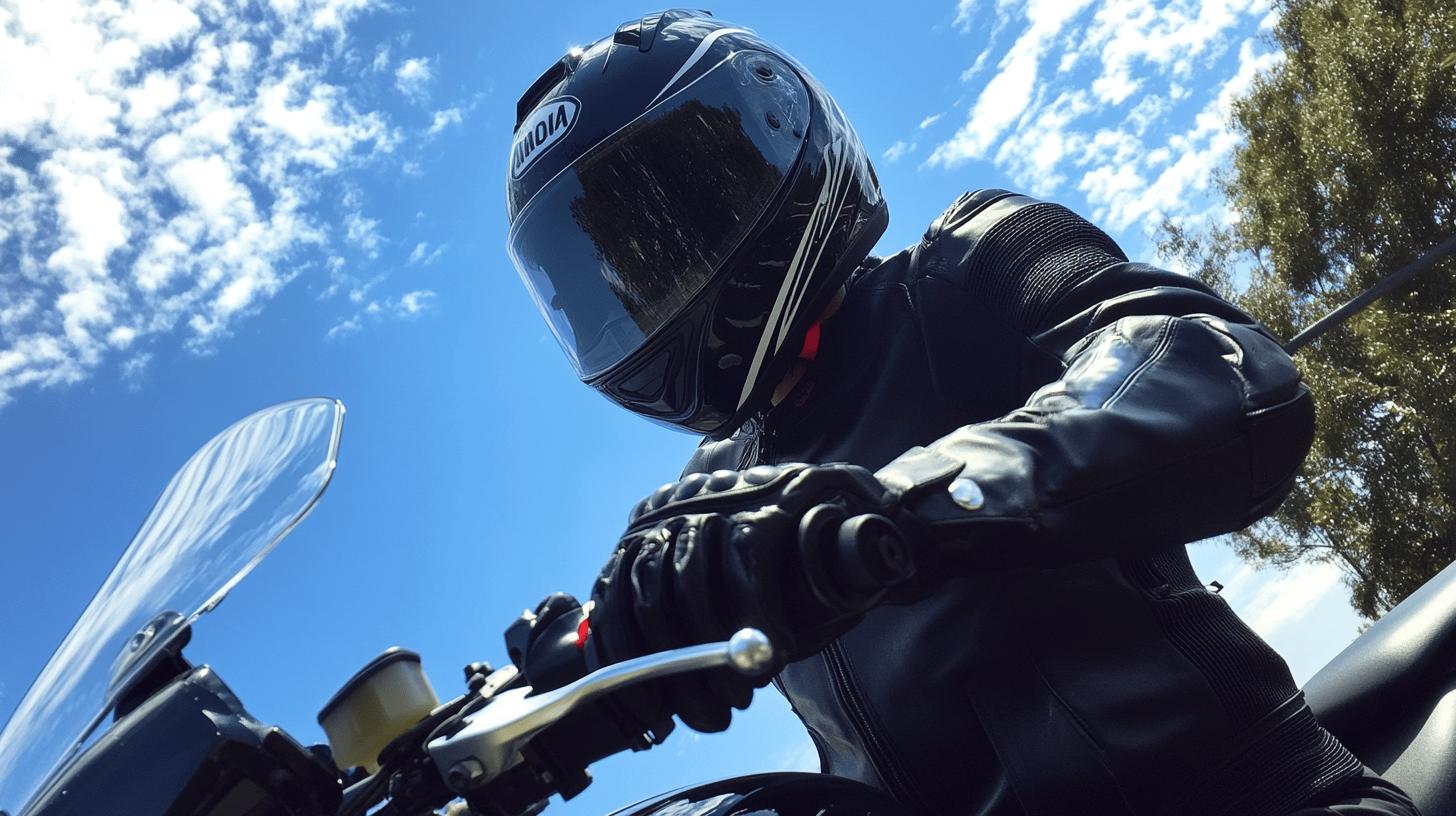Is finding the perfect motorcycle helmet as elusive as the open road feels endless? If you've battled with discomfort on long rides, the answer might be closer than you think.
Comfort is not just a luxury; it's a necessity for focused and enjoyable riding. This article unpacks what makes certain helmets more comfortable than others.
From advanced ventilation systems to adjustable fits, understanding these features can transform your riding experience. Dive into the insights and discover which helmet might just be your perfect ride companion.
Exploring Comfort Features in Motorcycle Helmets

Ventilation systems and helmet padding play critical roles in enhancing the comfort of motorcycle helmets. Advanced ventilation systems ensure a continuous flow of air, reducing heat buildup and sweat accumulation during rides.
This feature is particularly beneficial for long-distance riders who require consistent airflow to maintain focus and comfort. Helmet padding, made from materials like memory foam, not only cushions impacts but also conforms to the rider's head shape, providing a snug and comfortable fit.
The combination of proper ventilation and high-quality padding results in a helmet that can be worn for extended periods without causing discomfort or fatigue.
Adjustable fit mechanisms are another vital component of helmet comfort. These mechanisms, which can include adjustable chin straps, removable liners, and customizable cheek pads, allow riders to tailor the helmet fit to their unique head shape.
An adjustable fit ensures that the helmet remains securely in place while riding, minimizing movement and potential distractions. By enabling personalized adjustments, these features accommodate various head sizes and shapes, which is essential for both safety and comfort.
Riders can confidently tackle any terrain, knowing their helmet is tailored for optimal fit.
Key comfort features found in helmets include:
-
Advanced ventilation systems
-
Quality helmet padding
-
Adjustable fit mechanisms
-
MIPS safety system
-
Lightweight design
These comfort features significantly impact the rider experience by allowing for extended wear without discomfort. The MIPS safety system, for example, not only enhances protection by reducing rotational forces during impacts but also contributes to comfort through its integration with helmet design.
A lightweight helmet reduces neck strain, particularly on longer rides, making it easier for riders to maintain posture and control. Together, these features create a riding experience that prioritizes both safety and comfort, encouraging riders to explore new routes with confidence.
Types of Motorcycle Helmets and Their Comfort Levels

Motorcycle helmets come in various styles, each offering unique comfort levels suited to different riding preferences. From full-face to dual-sport, the design and features of each helmet type can significantly affect the rider's experience. Understanding these differences is crucial for selecting the most comfortable option that meets both protection and comfort needs.
Full-Face Helmets
Full-face helmets are renowned for their comprehensive coverage, providing not only superior protection but also a high level of comfort. They envelop the entire head, including the chin and jaw, which helps in reducing wind noise and protecting against environmental elements such as rain and debris. The snug fit of full-face helmets contributes to comfort by minimizing helmet movement during rides, which is essential for maintaining focus and reducing fatigue on longer journeys.
Modular Helmets
Modular helmets offer a versatile solution with their distinct flip-up design. This type of helmet combines the full coverage of a full-face helmet with the convenience of an open-face model. Riders can easily lift the chin bar for increased airflow at stops or during low-speed rides, enhancing comfort without compromising safety. The adaptability of modular helmets makes them particularly appealing for touring and commuting, where conditions may vary throughout the ride.
Open-Face Helmets
Open-face helmets are favored for their breathability and lightweight construction, making them a comfortable choice for riders who prioritize a sense of freedom. Without a chin bar, these helmets allow more airflow, which helps keep riders cool, especially in warm weather. While they offer less protection compared to full-face helmets, the reduced weight and increased ventilation can significantly improve comfort for short rides and casual cruising.
Dual-Sport Helmets
Dual-sport helmets are designed to bridge the gap between on-road and off-road riding, offering a balance of comfort and functionality. These helmets typically feature a larger visor and extended chin protection, which are beneficial for both street and dirt environments.
The design accommodates goggles, providing flexibility for various riding conditions. Dual-sport helmets are equipped with efficient ventilation systems to maintain comfort across different terrains, making them a versatile choice for adventurous riders who navigate diverse landscapes.
Materials and Their Role in Helmet Comfort

What materials are used in motorcycle helmets to enhance comfort? High-quality materials like EPS foam and advanced composites are integral to helmet comfort. EPS foam, a common choice for inner liners, excels in impact absorption while offering a lightweight feel.
Regarding shell construction, materials such as polycarbonate, fiberglass, and carbon fiber are favored for their durability and reduced weight. A lighter helmet minimizes neck strain, especially during prolonged rides, significantly enhancing overall comfort.
How do inner linings contribute to helmet comfort? Inner linings often feature moisture-wicking fabrics, a technology that draws sweat away from the skin, keeping riders cool and dry. This feature is essential for maintaining comfort during long rides in varying weather conditions.
Liners made from materials like microfiber or Coolmax are soft against the skin and help prevent irritation. The ability to remove and wash these linings also ensures that the helmet remains fresh and comfortable over time.
Below is a table summarizing key materials used in helmets and their comfort benefits:
| Material | Comfort Impact |
|---|---|
| EPS Foam | Lightweight impact absorption |
| Polycarbonate | Durability with moderate weight |
| Fiberglass | Balance of strength and weight |
| Carbon Fiber | Exceptional lightweight and durability |
These materials work together to create a helmet that not only protects but also provides a comfortable fit. The integration of lightweight, durable shell materials with advanced inner linings ensures that helmets can be worn for extended periods without causing discomfort, promoting an enjoyable riding experience.
Top Brands Known for Comfortable Helmets

When it comes to selecting a comfortable motorcycle helmet, brand reputation plays a pivotal role. Precision in engineering, attention to detail, and the use of high-quality materials are hallmarks of top-tier helmet manufacturers.
These brands invest heavily in research and development to ensure their helmets provide not only optimal protection but also unparalleled comfort. Riders often gravitate towards well-established brands known for their commitment to quality and comfort, as these factors significantly enhance the riding experience.
- Shoei Neotec 3
- Arai RX-7V Evo
- Schuberth C5
What distinguishes these brands in terms of comfort? Shoei, Arai, and Schuberth are celebrated for their ability to integrate advanced comfort features into their helmet designs. Shoei’s Neotec 3 offers a seamless blend of comfort and versatility with its modular design, making it ideal for long touring rides.
The Arai RX-7V Evo is revered for its plush interiors and precise fit, ensuring comfort even during extended wear. Schuberth’s C5 is renowned for its quietness and aerodynamic efficiency, minimizing wind noise and pressure. These brands stand out due to their dedication to creating helmets that cater to the diverse needs of riders, prioritizing comfort without compromising safety.
Personalizing Helmet Fit for Maximum Comfort

Custom-fit helmets provide an individualized fit, which is crucial for both comfort and safety. Precision in fitting ensures that the helmet aligns perfectly with the rider's head shape, reducing pressure points and enhancing overall wearability.
This personalized approach not only improves comfort but also ensures superior safety by maintaining the helmet's position during rides. Helmets with adjustable features, such as padding or cheek pads, offer additional customization, allowing riders to tweak the fit according to personal preferences or seasonal clothing variations.
4 steps to find the right helmet size:
- Measure head circumference
- Refer to the brand's size chart
- Try on helmets with adjustable features
- Check for snug but comfortable fit
A properly fitted helmet is paramount for comfort and safety. By following a size guide and ensuring a snug but not overly tight fit, riders can avoid discomfort and distractions caused by helmet movement. This secure fit also maximizes protection during impacts.
Investing time in selecting a helmet with adjustable features allows for adjustments that accommodate changes in riding gear or conditions, ensuring the helmet remains comfortable across different scenarios.
Rider Testimonials and Their Comfort Experiences

Rider testimonials offer invaluable insights into the comfort levels of motorcycle helmets. These firsthand accounts shed light on various aspects such as fit, ventilation, and padding, helping potential buyers make informed decisions.
By sharing their experiences, riders can highlight the strengths and potential drawbacks of different helmet models, offering a real-world perspective that complements technical specifications and expert reviews.
One rider noted, "The Shoei Neotec 3 has been a game-changer for my long rides. The fit is incredibly snug, and the ventilation system keeps me cool even in the hottest weather." This feedback underscores the importance of a secure fit and effective airflow, which are crucial for maintaining comfort over extended periods.
Another rider shared their experience with the Arai RX-7V Evo, stating, "The padding feels luxurious, and the helmet practically molds to my head, reducing fatigue on long trips."
Similarly, a rider praised the Schuberth C5 for its quietness and comfort, saying, "I can ride for hours without feeling the wind noise that used to be unbearable with my old helmet. The design and padding make a significant difference."
Testimonials like these emphasize how specific features, such as noise reduction and quality materials, can enhance the overall riding experience. Rider feedback not only highlights the comfort attributes of helmets but also guides others toward models that may best suit their needs.
Final Words
Diving into the comfort features of motorcycle helmets reveals how advanced ventilation, quality padding, and adjustable fit transform the riding experience. Each helmet type, from full-face to dual-sport, offers unique comfort benefits suited for different riding styles.
Understanding materials and brand reputations further aids in choosing the right helmet. Personalizing fit remains a key factor in maximizing comfort and safety. With these insights, riders can better determine what the most comfortable motorcycle helmet is for their needs.
FAQ
What is the most comfortable motorcycle helmet?
The most comfortable motorcycle helmets typically include features like advanced ventilation, quality padding, and a lightweight design. Top brands renowned for comfort include Shoei, Arai, and Schuberth with models such as Shoei Neotec 3 and Arai RX-7V Evo.
Do motorcycle helmets get more comfortable over time?
Motorcycle helmets may become more comfortable with use as the inner padding adjusts to the shape of the rider's head, providing a more personalized fit. Proper initial fit is crucial for long-term comfort.
What is the safest motorcycle helmet?
Full-face helmets are considered the safest due to their comprehensive coverage and protection mechanics. Additional safety features like the MIPS system can further enhance protective capabilities.
Which is the No. 1 helmet for comfort and safety?
Top-rated helmets for both comfort and safety include models from Shoei, Arai, and Schuberth. These brands are known for integrating high-quality materials and advanced safety systems such as MIPS.
What materials contribute to helmet comfort?
Materials like EPS foam, moisture-wicking inner linings, and lightweight shell construction greatly enhance comfort. These materials help manage heat and fit securely, increasing rider satisfaction and safety.
How does padding affect helmet comfort?
High-quality padding in helmets provides cushioning and reduces pressure points, improving overall comfort and fit. It can also help absorb impacts in case of an accident while maintaining a snug fit.
How do ventilation systems enhance helmet comfort?
Ventilation systems improve air circulation, keeping riders cool and reducing interior moisture. Effective vent designs contribute to a pleasant riding experience, even in warmer climates.
What features enhance the adjustability of helmets for custom fitting?
Helmets with adjustable mechanisms, such as interchangeable padding or fit systems, allow riders to achieve a snug, customized fit. These features are critical for combining comfort with safety.

Mark Anderson is a trusted expert with over 25 years of riding experience. At 56, his deep knowledge of long-distance touring and participation in major motorcycle rallies makes him a reliable source for gear recommendations on ProtectiveGearz. Mark’s decades of firsthand experience ensure his advice is authoritative and valuable to riders seeking expert guidance.



